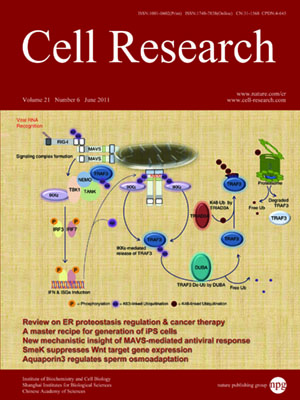
Volume 21, No 6, Jun 2011
ISSN: 1001-0602
EISSN: 1748-7838 2018
impact factor 17.848*
(Clarivate Analytics, 2019)
Volume 21 Issue 6, June 2011: 957-969
ORIGINAL ARTICLES
The endoplasmic reticulum-associated degradation is necessary for plant salt tolerance
Lijing Liu, Feng Cui, Qingliang Li, Bojiao Yin, Huawei Zhang, Baoying Lin, Yaorong Wu, Ran Xia, Sanyuan Tang and Qi Xie
State Key Laboratory of Plant Genomics, National Center for Plant Gene Research, Institute of Genetics and Developmental Biology, Chinese Academy of Sciences, No.1 West Beichen Road, Beijing 100101, China
Correspondence: Qi Xie,(qxie@genetics.ac.cn)
Eukaryotic organisms have quality-control mechanisms that allow misfolded or unassembled proteins to be retained in the endoplasmic reticulum (ER) and subsequently degraded by ER-associated degradation (ERAD). The ERAD pathway is well studied in yeast and mammals; however, the biological functions of plant ERAD have not been reported. Through molecular and cellular biological approaches, we found that ERAD is necessary for plants to overcome salt stress. Upon salt treatment ubiquitinated proteins increased in plant cells, especially unfolded proteins that quickly accumulated in the ER and subsequently induced ER stress responses. Defect in HRD3A of the HRD1/HRD3 complex of the ERAD pathway resulted in alteration of the unfolded protein response (UPR), increased plant sensitivity to salt, and retention of ERAD substrates in plant cells. Furthermore, we demonstrated that Ca
2+ release from the ER is involved in the elevation of UPR and reactive oxygen species (ROS) participates the ERAD-related plant salt response pathway.b
Cell Research (2011) 21:957-969. doi:10.1038/cr.2010.181; published online 28 December 2010
FULL TEXT | PDF
Browse 2165


